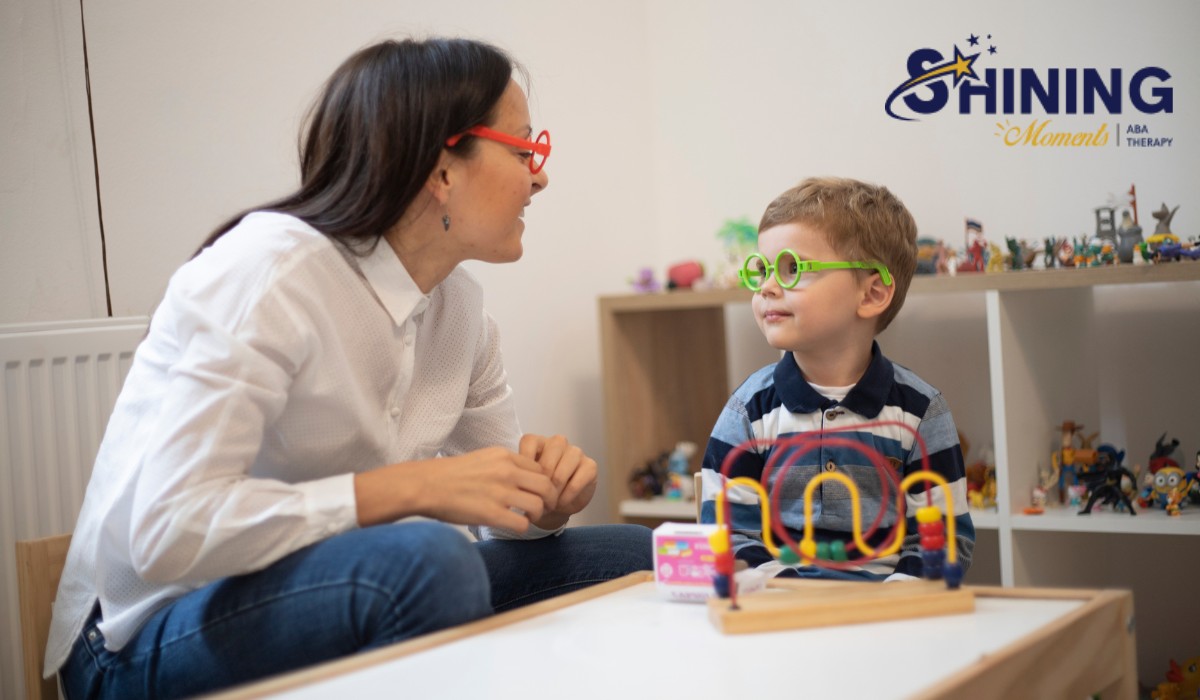Key Points:
- Discrete Trial Training (DTT) is a structured ABA therapy approach that breaks skills into small, manageable steps.
- Children with autism benefit from DTT by improving communication, social, and daily living skills through repetition and reinforcement.
- Parents can support DTT progress by understanding its principles and integrating practice opportunities into daily routines.
Helping a child with autism learn new skills can sometimes feel overwhelming. You may wonder how to encourage communication, social interaction, or even basic daily routines without constant frustration. Discrete Trial Training (DTT), a structured technique within Applied Behavior Analysis (ABA) therapy, offers a clear framework for teaching these skills. By breaking tasks into small, achievable steps and reinforcing progress, children gain confidence and meaningful abilities over time.
In this article, we’ll explore what DTT is, how it works, practical examples, and ways parents can support their children at home.
What is Discrete Trial Training?
Discrete Trial Training is a method of teaching that uses structured, repetitive trials to teach specific skills. Each trial consists of a clear instruction, a response from the child, and an immediate consequence—either reinforcement for a correct response or a guided correction for an incorrect one.
Unlike naturalistic learning, which happens spontaneously, DTT provides consistency and clarity. Children know exactly what is expected, which can reduce frustration and confusion. Skills are broken down into small, digestible components, making complex behaviors achievable.
Core Components of DTT
To understand how DTT works, it’s helpful to know its primary elements:
- Instruction: A clear, concise prompt that tells the child what to do. For example, “Touch the red block.”
- Response: The child’s behavior or answer to the instruction. This is carefully observed and recorded.
- Consequence: Immediate feedback, usually positive reinforcement for correct responses. If the response is incorrect, the therapist provides guidance or modeling to help the child learn.
- Inter-trial Interval: A brief pause between trials to reset attention and prepare for the next instruction.
By repeating this cycle hundreds of times in a session, children begin to associate actions with outcomes and gradually learn complex skills.
Why DTT is Effective for Children with Autism
Children with autism often benefit from structured, predictable learning environments. DTT provides this structure, making it easier for them to focus, understand expectations, and succeed.
Key benefits include:
- Skill acquisition in small steps: Complex skills are broken into manageable parts, reducing overwhelm.
- Clear measurement of progress: Each trial is documented, giving families and therapists concrete data on improvement.
- Consistency across learning environments: When implemented consistently, children experience less confusion and greater skill retention.
- Behavior shaping: DTT can be used to reinforce desirable behaviors while reducing behaviors that interfere with learning.
Parents often notice that DTT doesn’t just teach academic or functional skills—it also fosters confidence and motivation. A child who successfully completes a task is more likely to try new skills, reinforcing a positive cycle of learning.
Practical Examples of Discrete Trial Training
Parents may wonder how DTT looks in real life. Here are some examples that highlight how the method works across various skill areas:
Communication Skills
- Example: Teaching a child to request items verbally. The therapist shows the child a toy, says, “Say ball,” and immediately provides the ball when the child attempts or correctly says the word.
- Outcome: Over time, the child learns that speaking or gesturing appropriately results in desired outcomes.
Social Skills
- Example: Teaching eye contact or greeting others. The therapist models the behavior, prompts the child to imitate, and rewards attempts with praise or small rewards.
- Outcome: Gradually, the child uses these social behaviors more naturally in daily life.
Self-Care Skills
- Example: Teaching toothbrushing. The task is broken into steps: pick up the toothbrush, apply toothpaste, brush teeth, rinse. Each step is prompted and reinforced.
- Outcome: Children master daily routines independently, which improves confidence and family life.
Cognitive Skills
- Example: Teaching colors or shapes. The therapist holds up an object and says, “Point to the red square.” Correct responses earn immediate reinforcement.
- Outcome: Children build foundational academic skills efficiently and retain them longer due to structured repetition.
 Steps Parents Can Take to Support DTT at Home
Steps Parents Can Take to Support DTT at Home
While professional ABA therapy sessions are crucial, parents play an important role in generalizing skills to daily life. By understanding DTT principles, parents can provide opportunities for practice outside therapy.
Tips for home practice:
Create a Predictable Routine
Consistency matters. Practice skills at the same time daily, such as morning routines or snack time, to reinforce learning naturally.
Use Clear Instructions
Break tasks into small, specific steps. Instead of saying, “Clean up,” try, “Put the blocks in the box.”
Reinforce Effort, Not Just Success
Celebrate attempts and partial successes. Immediate praise or a small reward encourages persistence and builds confidence.
Keep Sessions Short and Engaging
Children learn better in short bursts. A few minutes of focused practice several times a day is more effective than long, stressful sessions.
Track Progress
Document responses and improvements. This helps identify patterns and informs your child’s ABA therapy plan.
 Challenges and Solutions in DTT
Challenges and Solutions in DTT
While DTT is highly effective, it can present challenges if implemented incorrectly. Understanding these potential obstacles can help parents and therapists maximize success.
Common challenges:
- Resistance to Repetition: Some children may find repeated trials boring or frustrating. Using highly motivating rewards and varying the order of tasks can keep engagement high and make learning more enjoyable.
- Difficulty Generalizing Skills: A child may succeed in therapy but struggle to apply skills at home or school. Practicing skills in multiple environments and involving caregivers in sessions helps children transfer what they’ve learned to real-life situations.
- Over-reliance on Prompts: Children may become dependent on prompts rather than performing independently. Gradually fading prompts while reinforcing correct responses encourages independent skill use over time.
- Limited Social Interaction: Because DTT is structured, opportunities for spontaneous social learning can be fewer. Combining DTT with naturalistic teaching methods balances structure with social engagement, giving children more chances to practice interactions naturally.
By anticipating these challenges, parents and therapists can make DTT a more effective, positive experience.
Combining DTT with Other ABA Approaches
Discrete Trial Training is one tool in the broader ABA therapy toolkit. When combined with other approaches, children gain a more holistic learning experience.
- Natural Environment Teaching (NET): Teaches skills during everyday activities, complementing the structured trials of DTT.
- Pivotal Response Treatment (PRT): Focuses on motivation and initiation, helping children practice skills spontaneously.
- Functional Communication Training (FCT): Helps children replace challenging behaviors with effective communication strategies.
Therapists blend these approaches with DTT to create individualized programs. This ensures children learn not only within structured sessions but also generalize skills to real-life settings.
 Maximizing DTT Success at Home and in Therapy
Maximizing DTT Success at Home and in Therapy
Discrete Trial Training is a structured, evidence-based ABA therapy method that helps children with autism acquire meaningful skills in communication, social interaction, self-care, and academics. By breaking tasks into small, manageable steps and reinforcing progress, DTT builds confidence and promotes independence.
Parents play a key role by reinforcing skills at home through predictable routines, clear instructions, and consistent encouragement. Combining DTT with other ABA methods ensures a comprehensive learning approach that addresses both structured skill development and real-world application.
If you’re looking for supportive ABA therapy, Shining Moments ABA offers individualized programs in New Jersey and Maryland to help children thrive. Our team works with families to implement DTT effectively, providing both guidance and encouragement so that progress extends beyond therapy sessions into everyday life. Contact us to learn more about our ABA therapy in Maryland or New Jersey and how we can help your child reach meaningful milestones.


